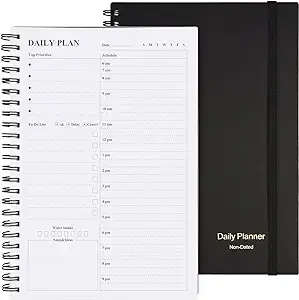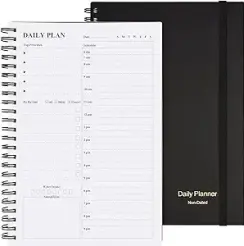- USDT(TRC-20)
- $0.0
When you want to be more productive, you should look to someone who has productivity down pat. Financial blogs are forever interviewing contemporary CEOs about their work habits, but those aren’t that inspirational; they’re always claiming that meditation and not answering emails are the keys to success, which isn’t really helpful to the average person who doesn’t have the time or resources to meditate or the luxury of an assistant to open the unanswered emails. For real inspo, you might want to try looking back in time: Ivy Lee, the founder of modern public relations, came up with a productivity method so good that it’s lived on for 100 years—and it still bears his name. Here’s how to try it.
My dream in life is to do something so unique and awesome that my name gets attached to it for all eternity but my more short-term goals involve just getting my basic tasks done every day. Good old Ivy Lee somehow managed to do both. He came up with his productivity method in an effort to help big businesses in the 1920s get more done. It’s all about creating manageable, prioritized to-do lists and sticking with them until they’re complete.
The method itself is simple. At the end of every work day, write down six tasks you have to complete tomorrow. (If it’s Friday, write down what you need to do Monday. Don’t forget that taking breaks over the weekend is important for productivity, too.) Do not write down more than six. The goal here is for the list to be manageable, not never-ending, so use your immediate judgement to determine which six things are most important for the next day. Next, prioritize them. You can do this however you see fit, but consider using a method like the Eisenhower Matrix to figure out which tasks are the timeliest and most urgent.
Hand-writing the to-do list is beneficial. You can do this in a digital note or doc, but writing by hand really sticks it in your brain, so you might consider using an old-fashioned planner, like this one:
Daily Planner Undated, Asten To Do List
$7.99
$9.99 Save $2.00
Get Deal


Get Deal
$7.99
$9.99 Save $2.00
The next day, it’s time to start on the list. Begin with the first task in the morning and see it all the way through before jumping to the second one. Keep going until the end of the workday, tapping into your capacity for doing deep work by focusing on just one task or project at a time. When your day is over, anything that is incomplete should be moved to tomorrow’s list and new tasks should be added to it until you reach six.
By rolling the tasks over, you ensure they’ll get done, but by being aware that you have the option to roll them over at all, you won’t feel overwhelmed. Do try to keep the tasks as granular as possible, though. Instead of writing “end-of-quarter report” as one list item, break it down. If pulling and analyzing the data is a step to writing the report, make it one task. If inputting it into a presentation is another, that’s one task, too.
As mentioned, you can do this in a planner, a digital note, or even your calendar, but the most important elements are maintaining that low number of tasks, prioritizing them, and not abandoning them if they are unfinished. Be sure to prioritize whatever you roll over to the next day above any new tasks, so everything gets done.
Full story here:
What is the Ivy Lee method?
My dream in life is to do something so unique and awesome that my name gets attached to it for all eternity but my more short-term goals involve just getting my basic tasks done every day. Good old Ivy Lee somehow managed to do both. He came up with his productivity method in an effort to help big businesses in the 1920s get more done. It’s all about creating manageable, prioritized to-do lists and sticking with them until they’re complete.
How do you use the Ivy Lee method?
The method itself is simple. At the end of every work day, write down six tasks you have to complete tomorrow. (If it’s Friday, write down what you need to do Monday. Don’t forget that taking breaks over the weekend is important for productivity, too.) Do not write down more than six. The goal here is for the list to be manageable, not never-ending, so use your immediate judgement to determine which six things are most important for the next day. Next, prioritize them. You can do this however you see fit, but consider using a method like the Eisenhower Matrix to figure out which tasks are the timeliest and most urgent.
Hand-writing the to-do list is beneficial. You can do this in a digital note or doc, but writing by hand really sticks it in your brain, so you might consider using an old-fashioned planner, like this one:
Daily Planner Undated, Asten To Do List
$7.99
$9.99 Save $2.00
Get Deal


Get Deal
$7.99
$9.99 Save $2.00
The next day, it’s time to start on the list. Begin with the first task in the morning and see it all the way through before jumping to the second one. Keep going until the end of the workday, tapping into your capacity for doing deep work by focusing on just one task or project at a time. When your day is over, anything that is incomplete should be moved to tomorrow’s list and new tasks should be added to it until you reach six.
By rolling the tasks over, you ensure they’ll get done, but by being aware that you have the option to roll them over at all, you won’t feel overwhelmed. Do try to keep the tasks as granular as possible, though. Instead of writing “end-of-quarter report” as one list item, break it down. If pulling and analyzing the data is a step to writing the report, make it one task. If inputting it into a presentation is another, that’s one task, too.
As mentioned, you can do this in a planner, a digital note, or even your calendar, but the most important elements are maintaining that low number of tasks, prioritizing them, and not abandoning them if they are unfinished. Be sure to prioritize whatever you roll over to the next day above any new tasks, so everything gets done.
Full story here:


